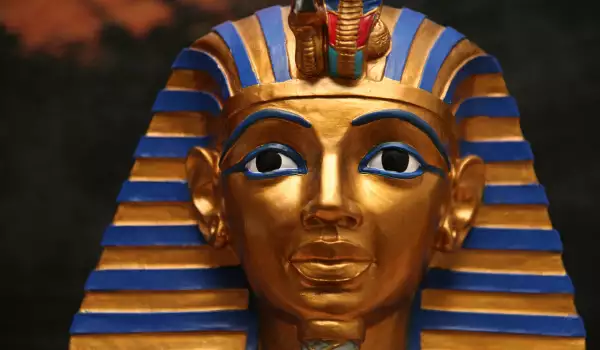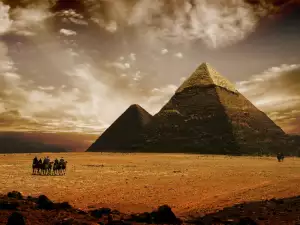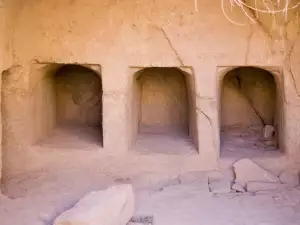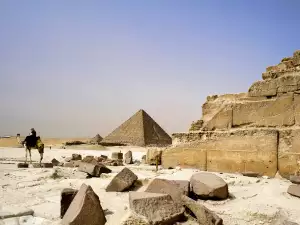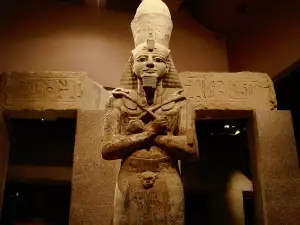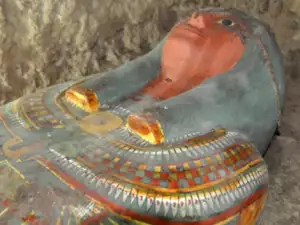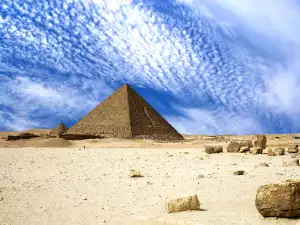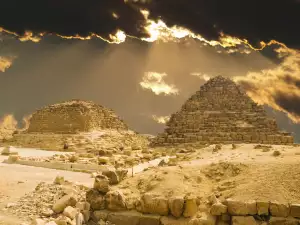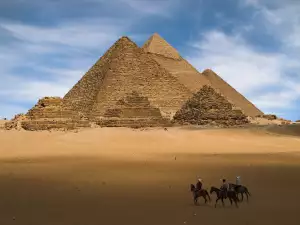Pharaohs in ancient times were not only the people representing the state. They rose to become powerful political and religious leaders who ruled over Ancient Egypt for more than 3, 000 years, from about 3150 BC to 30 BC. They were perceived as gods. They were proudly titled as High Priest of each temple, Lord of the Two Lands or King of Earth and Heaven.
The Pharaohs created strict laws embedded in the psyche of the entire nation of the Nile Valley and possessed absolute power. Thanks to their warlike policy, they created a powerful empire that was the main force and engine of progress in the ancient world for centuries. Where did the title Lords of Ancient Egypt come from, what kind of life did these deified people have and what did they leave to the generations?
Pharaoh in Ancient Egypt
Pharaoh is a title of the ruler in ancient Egypt, which in translation means a palace, a big house. This was originally the name of the residence of the man who ruled in the Nile valley and later the name was transferred to the ruler as a title.
Rulers had their attributes that made them recognizable. They wore a double crown decorated with a cobra, called Pschent, which symbolized the unification of the two kingdoms - Lower and Upper Egypt. They carried a scepter and a whip, which symbolized their absolute power.
A signature attribute of the ruler is the Nemes hat, which in practice is a striped head cloth worn by the pharaoh. Such a cloth is depicted on Pharaoh Tutankhamun's golden funerary mask. The cloth covered the ruler's head, descended to the back and two draperies fell to his shoulders.
To become pharaoh and absolute master of Earth and Heaven, each heir to the throne was trained from an early age. From the age of four, the future absolute monarchs were taught reading, writing, arithmetic, hunting and martial arts. As early as 8 or 10 years old, they were married to a woman from the family - most often one of their sisters, who became the Great Wife of the pharaoh. Besides her, the ruler had many more wives and children, but only the first-born child of the Great Wife became the heir to the throne.
The pharaoh's role was to mediate between the gods and the people. That is why he was considered an incarnation of the god Horus. After his death he became the personification of the god Osiris. The already dead pharaoh was transported to the other world to continue reigning along with the gods.
Pharaoh's absolute power also extended over religion. The ruler was also a high priest who oversaw the daily rituals, the construction of religious temples, so that the gods would receive the worship of the people and be favorable to them. Otherwise, they could punish the Egyptians with drought, famine and disease. Deputies of the ruler in the temples, where the rituals were performed, were the priests appointed by the pharaoh.
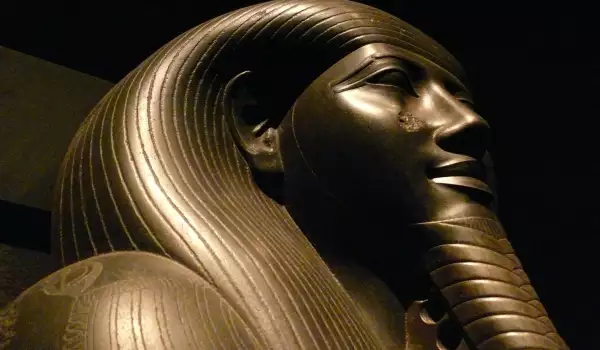
The Pharaoh was also the commander-in-chief of the army, leading the wars of conquest and campaigns that satisfied the needs of both the ruler and the entire state for resources - from slaves to cedar wood and fragrant oils.
The Pharaoh's most important holiday is the Sed festival. It was celebrated on the 30th anniversary of the ruler's accession to the throne. Among the festivities was the custom for the pharaoh to run some distance to show that he was still healthy and strong and could successfully lead the state. Egyptologists believe that this holiday has a very ancient origin, since the times when it was extremely important for the one who guided the destinies of the entire nation to be strong and healthy. Otherwise, it was ritually killed and a replacement was chosen.
Each pharaoh appointed his assistants - vizier, who performed the position of today's minister, governors of individual provinces, army officers and priests.
In the life of every pharaoh the main place was occupied by constructions. Temples, pyramids, palaces and public buildings were the mark that the pharaoh left for his reign. His personal work was the construction of his tomb, which sometimes continued throughout his reign. The tomb was prepared to provide everything necessary for the afterlife and rule of the ruler. All his wealth was buried with him.
The ritual of sending the pharaoh to the afterlife was raised to an extraordinary level. The dead ruler's body was embalmed using a complex technique so that his mummy would remain intact. The location of the tomb was kept a deep secret, so that the treasures of the ruler would not be robbed and the protection was done not only through rituals, but also with various poisonous substances, known today as the pharaoh's curse.
Most pharaohs were men, but historical sources also reveal women - rulers who bore the title of pharaoh and ruled the destinies of the people along the Nile. The most influential pharaohs in Ancient Egypt are also among the most famous Achime historical figures in the Old World.
Here are some of the most famous and powerful pharaohs in the long history of Ancient Egypt.
Menes (c. 3201 – 3101 BC)
Menes was the first Egyptian pharaoh. This is the ruler who united Upper and Lower Egypt. Menes also founded the first dynasty around 3150 BC.
The first pharaoh deserved his place among the greatest rulers because he managed to transform the two warring kingdoms into a powerful and unified state. He created the first laws and founded the city of Memphis, which became the capital of Egypt in the following centuries.
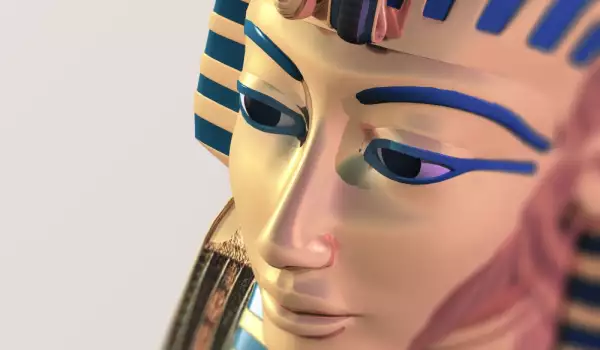
Thutmose III (1481 – 1425 BC)
Thutmose III ruled Egypt from 1479 BC to 1425 BC. Today's Egyptologists call him the Napoleon of Ancient Egypt because of his conquest policy. During the first 22 years of his reign, he ruled with his stepmother Hatshepsut. After she died, Thutmose III engaged in a series of military campaigns that led to the creation of the largest empire reached in antiquity in the Nile Valley. His lands stretched from Ethiopia to present-day Turkey in the north and Iraq in the east.
His military conquests made the country very rich and the pharaoh enjoyed the authority of a national hero.
Hatshepsut (c. 1507 – 1458 BC)
Hatshepsut was one of the few female pharaohs in Ancient Egypt. She was never formally crowned ruler. Hatshepsut ruled as Thutmose III's regent after the death of his father, Thutmose II. Her rule was very long, 22 years, some of which were co-ruled. She enjoyed a reputation as a wise and good ruler.
By her order, many buildings were built, statues were erected. The Egyptian kingdom flourished and experienced unprecedented long peace and prosperity under her. Although after her death Thutmose III ordered the removal of her images from all temples and monuments, the people remembered and loved her and she was not forgotten in the vicissitudes of history.
Amenhotep III (c. 1411 – 1353 BC)
Amenhotep III ruled long for the time he lived in, almost 40 years. He is one of the pharaohs of the 18th dynasty. His rule was stable and brought prosperity. Became pharaoh only at the age of 12 after the death of his father, Thutmose IV. Amenhotep III took advantage of Egypt's international power and prosperity during his reign to erect numerous magnificent temples, monuments and statues.
In his time, art, science and medicine experienced a real Golden Age.
Ramses II (c. 1303 – 1213 BC)
Ramses II is considered the greatest pharaoh of Egypt. He is also the longest-reigning, more than 60 years. For the time of antiquity this is a phenomenal achievement. During his reign from about 1279 BC. to 1213 BC, Ramesses II built many notable temples, including the Ramesseum and the temples of Abu Simbel. Today he is also considered a military genius. He led a remarkable army of 100, 000 men. This enabled him to create a huge empire.
He is also credited with the first international treaty with the Hittite kingdom. When Ramses died, his subjects believed that the end of the world had come, because none of them had been born when the pharaoh took the throne. The average life expectancy in Egypt at the time of Ramses was 40 years. So Ramses became famous for another unique fact, he outlived all his subjects. Naturally, the Egyptians declared him a god and honored him even after his death and the next 9 successors at the head of Egypt after him bore his name.
